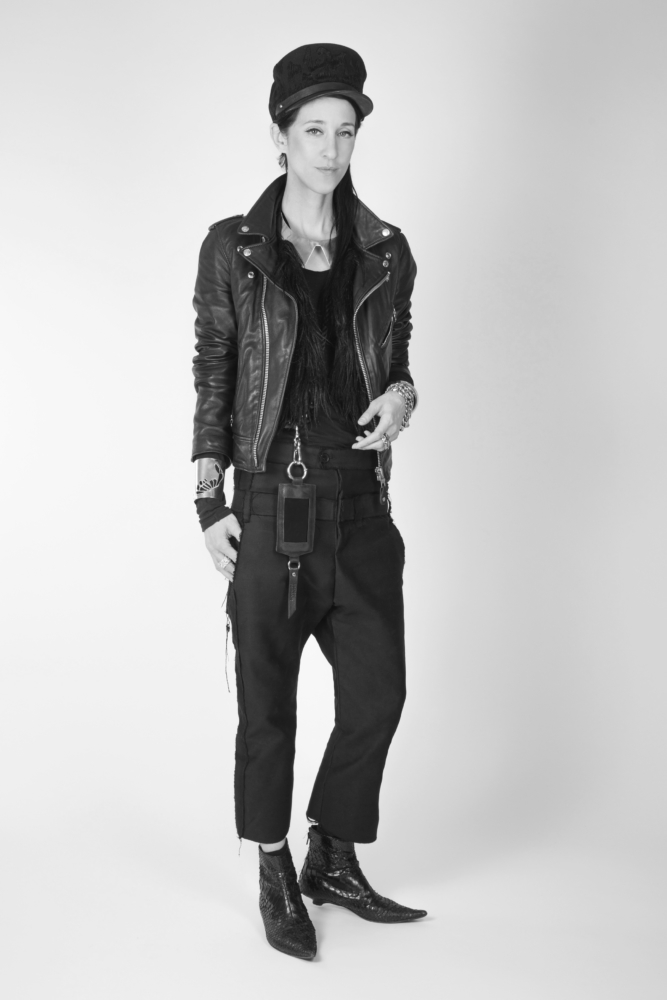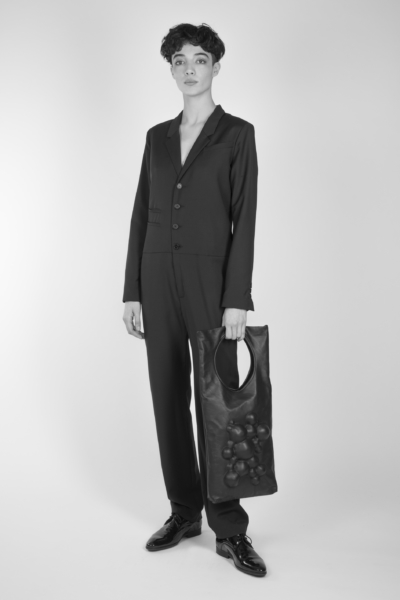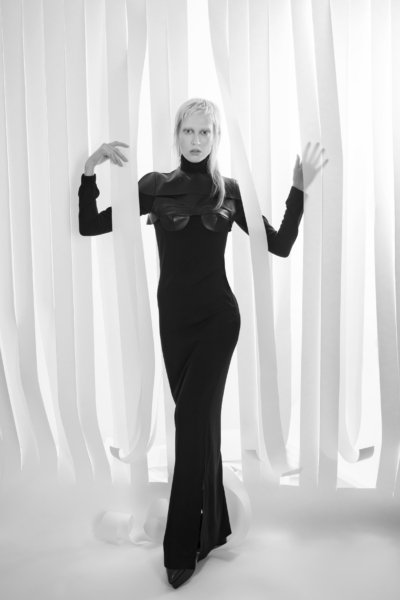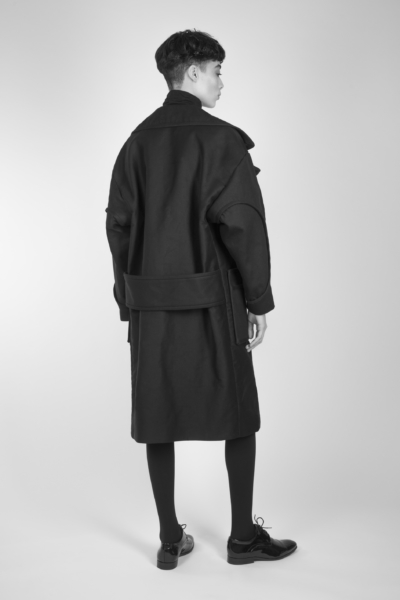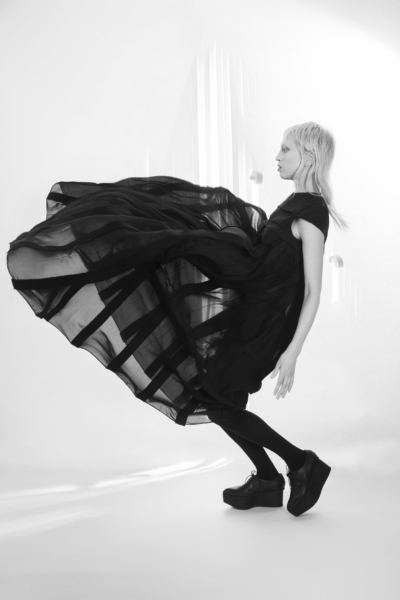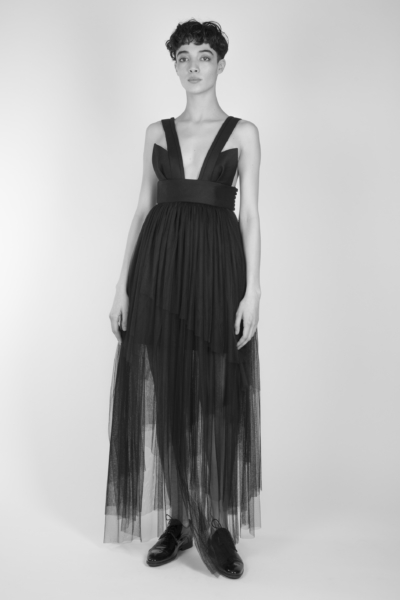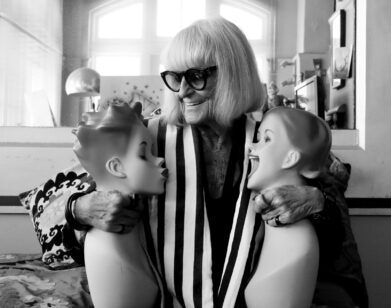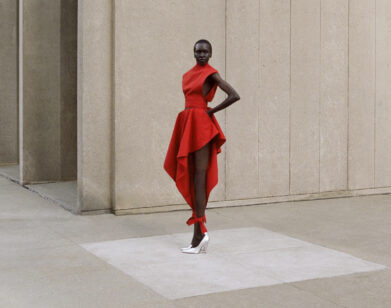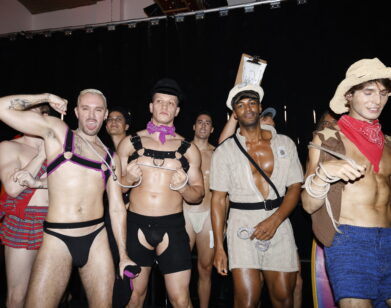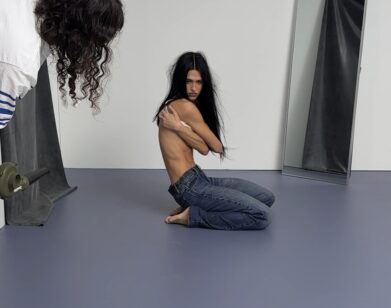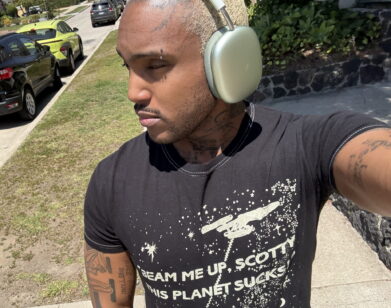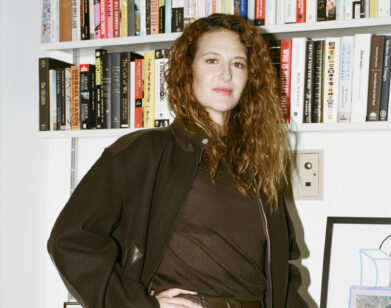Berlin Designer Esther Perbandt Turns On the Dark
Last year, Berlin fashion designer Esther Perbandt got a random email from a casting agent in Los Angeles, asking her to take part in a reality TV show. “My first instinct was, this isn’t for me,” she recalls. “After a few days, I thought, why not try something new? What do I have to lose?” The designer, 43, is one of 12 contestants on the new Amazon Prime TV show Making The Cut, which debuts Friday. Co-hosted by Heidi Klum and Tim Gunn, the show is essentially a hunt for the next big, global fashion brand. The winning designer get one million dollars and the opportunity to sell their work on Amazon. Perbandt makes for an unlikely reality TV contestant. A deadpan minimalist who designs only in black, she’s been compared to Rick Owens and has designed clothes for everyone from Peaches to Rammstein. Ahead of the show’s premiere, the designer shares some of her inspirations, from ’90s-era Berlin to the Russian avant-garde.
———
MOSCOW
“I was born and bred in Berlin, toughened up in Moscow, and polished in Paris. My clothing is my story of living in all three cities. I couldn’t say my style is only Berlin, it’s too chic. But it isn’t only Paris, I’m too rock n roll. It’s a bit of Moscow, as I spent three months in Russia doing a fashion internship there. Someone I met at an illegal bar in Berlin said, ‘Just buy a ticket and go.’ I went, drank vodka, and the first few days there, I was up all night, working on a dress with a designer, creating an arty, costume-like collection, which was presented at an avant-garde fashion week in Tbilisi, Georgia. When I left Berlin, I was naive with long blonde hair. When I returned from Moscow, I had short brown hair and wore all black.”
———
RUSSIAN AVANT-GARDE
“When I returned to Berlin and started designing, the Russian avant-garde of the 1920s became the focus of my first collection. Mostly the Russian women artists, like Lyubov Popova, Natalia Goncharova and Aleksandra Ekster. They’re called the amazon women of the period. I studied their work intimately, their style, their linework. But Kasimir Malevich’s painting Black Square from 1915, is also an influence.”
———
BERGHAIN
“It’s fantastic. You have to go there at least once. You don’t have to party, just check out the space. I was there once for an exhibition. I just stood there looking at the architecture. A lot of people connect my work to this all-black Berlin look, but the funny thing is, nobody would wear my collection in Berghain. It’s far too elegant, too classy.”
———
BERLIN IN THE ’90s
“It was crazy, the border between East and West Berlin were newly opened, all these illegal bars and nightclubs were popping up, there was so much creativity at that time, when East and West Berliners could all party together. It created a strong backbone for a techno scene. That’s what made music such a strong part of Berlin culture, inspiring for people to come here. It still is.”
———
THE ART WORLD
“Because I’m so connected to the art scene here, I was worried people might not like it if I do something like this show. I really wanted to show my world. I’m not a good salesperson. French artist Jaybo Monk is my muse. I met him in the ’90s. He’s a painter, musician, and founded a streetwear label in Berlin.”
———
RICK OWENS
“A lot of people compare my work to Rick Owens. It’s a nice parallel, though Rick has more layering, structure, and tailoring. I see a bigger connection to Ann Demeulemeester. But in both cases, there is truth.”
———
GOTHS
“I don’t feel myself belonging at all to goth people. They don’t have taste, sorry. Maybe I’m being mean? There are different ways of using black and my way isn’t that. They dream of a vampire life, that’s so teenager-like. The women who wear my stuff are women between 40 and 75. When they put on my garments, they just glow and they’re full of life. Goth people, for me, usually don’t really have a big sense for style and aesthetics.”
———
BLACK
“Black has an expressive power. Against its contrast, everything feels lighter beside it. So, working with black means working with the light. I love all different shades of black. Every fabric has its own illumination. No matter how dark my designs seem for someone else, they possess a light and a shine that can never be dimmed. Black is endless, timeless, positive, and healthy. It makes people beautiful and lets them glow. My black makes them feel strong and empowered. For me, black is a perfect frame for a beautiful glowing personality, just like the right frame to an amazing piece of art.”

